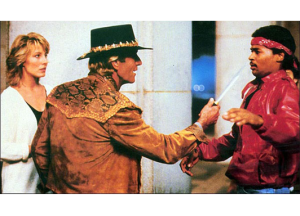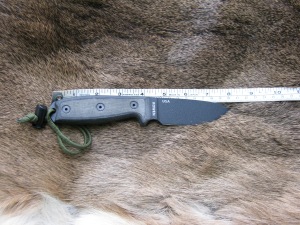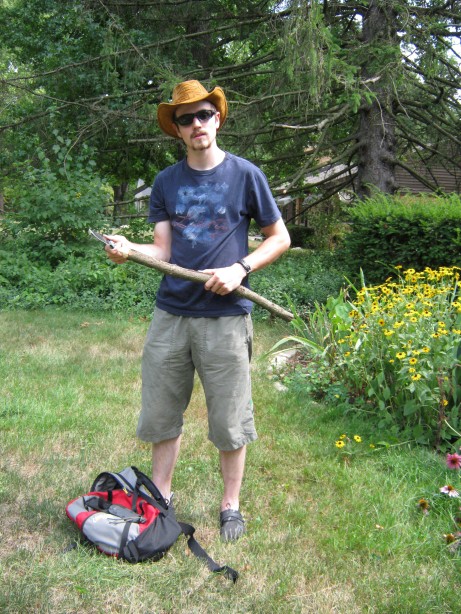A wise man once observed, “It isn’t often a man wants a gun, but when he does he wants one pretty badly.” When approaching the subject of knives, I believe the saying could be changed to, “A man often wants his knife, and when he does he wants it pretty badly.” Regardless of the environment, a man is continually finding himself in need of a sharp edged tool to accomplish a task. A solid, sharp, and reliable knife can be a tremendous help and a life-saver in innumerable situations whether one wishes to open a box or set snares for food.
Although I have quite a few folding knives of various sizes, shapes, and styles, I have yet to obtain a reliable fixed blade knife. In my quest to find the best knife for my needs, I sought the advice of a friend, Chris Barfield, who generously offered to loan me his entire collection of Esee (formerly Rat Cutlery) knives. After an afternoon of vigorous testing, I was more than impressed by the craftsmanship and quality of Esee knives, the ergonomics of each blade is excellent and each edge stayed remarkably sharp. Despite their high price tag, I am definitely considering making an Esee knife the centerpiece of my survival gear collection.
The first blade I examined was the massive Junglas (pronounced “hoon-glass”), a razor sharp 16” knife worthy of Crocodile Dundee himself. Clearly designed for jungle operations, the junglas is essentially a small and extremely sturdy machete. During my trip in the Amazon Rainforest in Brazil the Junglas would have been exceptionally useful and I can well understand the logic behind this design. The particular junglas Chris loaned me was a commemorative edition and was thereby protected from my baser, tree chopping, jungle hacking, instincts. But, despite its ferocious beauty I quickly decided the Junglas was not the knife for me. While cutting through thick vines and fending off crocs would be a snap with this knife, I live a ways away from the jungle and small, delicate tasks would be extremely difficult to perform with the large, thick blade. Additionally, my ability to use this knife would be limited by the fact that most urban city dwellers feel rather uncomfortable around hefty knives the side of swords and the Junglas does not lend itself to being carried discretely, a feature that does not work well for a city dweller’s self-defense.
Moving down the scale, the 6” bladed RC-6 is the size that one traditionally associates with hunting and survival knives. The full-length tang is covered by micarta grips that provide a snug and comfortable hold, with just enough roughness to prevent any slipping. The handle’s curve fits neatly into the palm and ends with a flat, projecting metal end that can be used as a hammer or have a paracord lanyard looped through. The top edge of the blade is flat, as on every Esee knife, providing an excellent surface for batoning the knife using a log or stick. Additionally, the spine of each knife features a section of jimping.
Along with its smaller brethren, the RC-4 and RC-3, I practiced chopping through tree branches about 2 ½” in diameter, carving sticks for snares, and comparing the blade size to the flanks of the family rabbit, Liberty (who I refer to affectionately as “Extra Crispy). The RC-6 made for extremely easy chopping and whittling, but was difficult to perform delicate tasks with, for example, I would hate to dig a splinter out of my hand with it or clean the family rabbit for food. The 4” blade on the RC-4 with its added serrations was almost as handy for chopping, and the diminished blade size provided far more control for delicate jobs. The RC-3 was short and handy, but made heavy duty work exponentially harder without providing a tremendous improvement in control. Out of the three knives I examined in the Esee RC series, the RC-4 definitely left the best impression on me.
Last be examined and certainly smallest in size the Izula I and II were up to bat. I must confess due to their small size, featuring a 2 ¾” blade, I seriously underestimated the power of these two wicked little beasts. The Esee Izulas scored homeruns on every test I could conceive, short of hanging from a cliff by one. Named after the tenacious South American “bullet ant”, the Izula more than lived up to it’s namesake. The short handle was unbelievably comfortable in my hand and the vicious blade flew through any task I tried with it, including hacking away at branches and prying open logs. While sizing up it’s potential to skin small game, I compared it’s size to my old Gerber folder I used for skinning squirrels, chipmunks, and raccoons when I was younger.
As you can see in the photo, the blades are nearly the same size, the Izula II is slightly shorter and has a steeper curve, giving it a wider and deeper slice. Cleaning and preparing small game would be no challenge for the Izula, indeed I quite wish that the Izula would have been in my hands when skinning all those tough old coons. When examining the handle, one must conclude it is on the short side, but is still quite ergonomic and comfortable to grip. As seen previously, one can either obtain micarta grips for the Izula or wrap the tang in paracord, both methods worked quite well, though I thought the micarta grip felt better. Combined with the kydex sheath and a paracord lanyard, the Izula makes an ideal every day carry survival knife due to its sleek profile and light weight. Comfortably concealing the Izula in the boot, thigh, around the neck, or pocket is a snap as opposed to any of the RC model knives.
However, some of you may have doubts as to the utility and sturdiness of such a small knife in a survival setting, after all, didn’t the mountain men and Rambo carry big, sharp 14” knives? My first response to such objections is never believe anything Hollywood says. Ever. Life is hard, it’s even harder for people who do things they see in movies. My second response is that while it can be a challenge to fell a tree with a small knife, it certainly is possible with the right technique. Watch these videos of survival experts working away with their pint sized survival knives, with practice, they can cover a lot of ground quickly with a small but sturdy knife.
http://www.youtube.com/watch?v=kNxSS1H_tH8
http://www.youtube.com/watch?v=voDgpAaUNNk
Conversely, I believe it is near impossible to perform tasks that require control and precision with a Rambo knife, no matter the technique. A big knife can be helpful in some situations, but for an all-around utility knife, I believe smaller is better.
The steel Esee uses is ordinary 1095 steel, which makes the edges softer and easier to sharpen. Despite the softness of the steel, I found the blades kept their edges despite some rather hefty abuse. Additionally, Esee blades do have to be cared for or they can collect rust. I do think that being in the habit of cleaning your knife off before putting it back in its sheath is a good habit to have, failing to do so almost got Daniel Boone killed by Shawnee Indians on one occasion. Not that not cleaning your knife will get you scalped, it’s just a good plan to take care of your stuff.
Below are some additional articles I found extremely helpful in deciding what composes a good survival knife and discovering how to use them. If you found this review helpful or have any helpful ideas or criticisms feel more than free to leave a comment. Good livin’ to ya!
http://artofmanliness.com/2011/11/29/how-to-choose-the-perfect-survival-knife/













